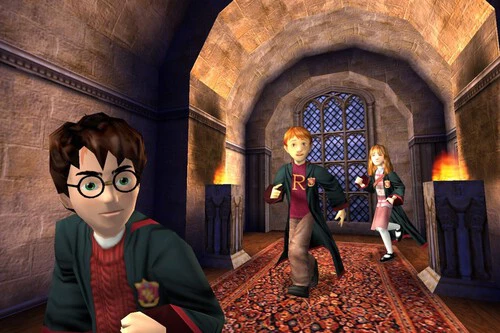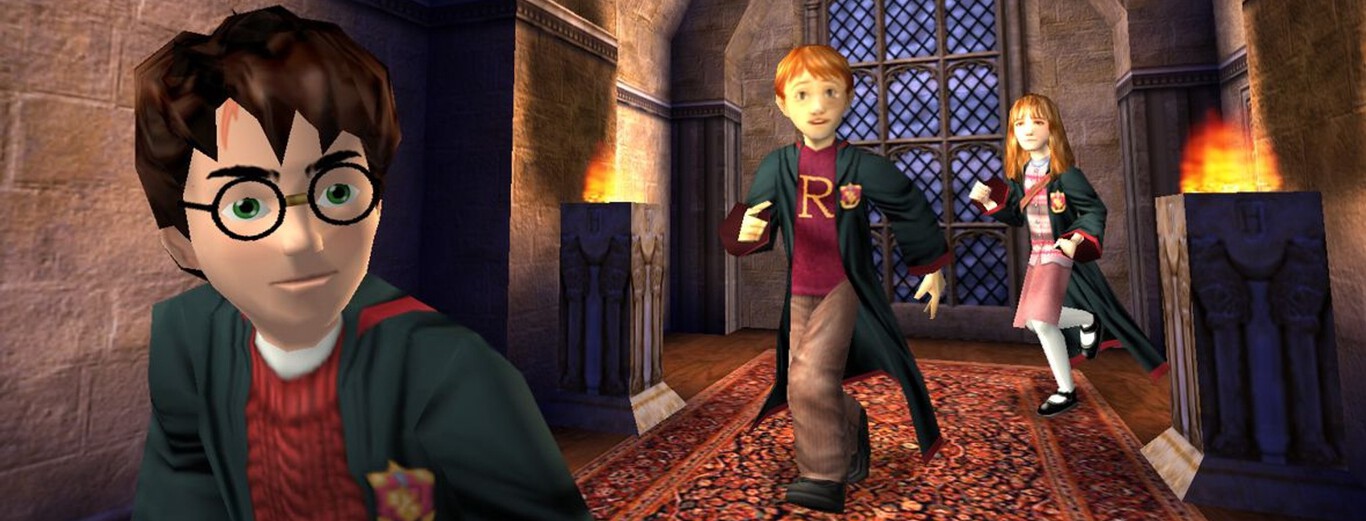How Photoshop Masterminded Harry Potter’s Talking Portraits: The Ultimate Copyright Hack
Hello everyone. Today, we’re diving into a tale of wizardry, not from the hallowed halls of Hogwarts, but from the equally mysterious and treacherous corridors of game development. Specifically, we’re talking about the 2001 PC adaptation of Harry Potter and the Sorcerer’s Stone, developed by KnowWonder under the ever-watchful eye of Electronic Arts. Now, before you start conjuring up images of magical gameplay and spellbinding graphics, let me stop you right there. The real magic here wasn’t in the game itself, but in how the developers managed to sidestep a legal minefield with nothing more than Photoshop and a bit of creative desperation.
The Portrait Predicament
Let’s set the scene. You’re tasked with bringing the enchanting world of Hogwarts to life on PC. The books and movies are filled with those iconic talking portraits lining the castle walls, each one a masterpiece in its own right. But here’s the rub: you can’t just slap the Mona Lisa or The Girl with a Pearl Earring into your game without risking a lawsuit from some art historian’s great-great-grandchild. Licensing famous paintings? Out of the question. Creating hundreds of original artworks? Not with EA’s budget, which, let’s be honest, probably went mostly into marketing and microtransactions even back then.
Enter Christo Vuchetich, a member of the KnowWonder team, who faced this conundrum head-on. In a move that would make any resourceful healer proud, he prescribed a solution that was as simple as it was brilliant: Photoshop. Yes, the same tool you use to remove red-eye from your vacation photos or to give yourself abs in your Tinder profile. The developers decided to take famous paintings, tweak them just enough to avoid copyright infringement, and—here’s the kicker—replace the faces with their own.

A Gallery of Game Developers
So, every time you wandered the digital halls of Hogwarts and saw a portrait winking at you, chances are you were looking at a slightly altered version of a KnowWonder employee. It’s like a developer’s LinkedIn profile exploded all over the castle walls. Forget the Fat Lady or Sir Cadogan; we’ve got Bob from accounting and Linda from HR keeping an eye on things. It’s a level of immersion that even the most die-hard role-players couldn’t have anticipated.
Now, some might call this lazy. I call it efficient. Why spend hours crafting original art when you can just slap your own mug onto a Renaissance masterpiece and call it a day? It’s the kind of out-of-the-box thinking that makes you wonder why more games don’t feature their developers as background characters. Imagine the possibilities: Kratos with the face of the intern who fetches coffee, or Master Chief unmasking to reveal the janitor who cleans the studio at night. The mind boggles.
Legal Loopholes and Laughter
But let’s not gloss over the real achievement here: dodging the legal department’s Avada Kedavra. By altering the paintings just enough, KnowWonder managed to stay on the right side of copyright law. It’s a bit like using a healing potion to cure a hangover—technically not what it’s intended for, but it gets the job done. Whether this method would hold up in today’s litigious climate is another question entirely, but back in 2001, it was a stroke of genius.
Of course, this approach does raise some questions. Did the developers have to sign waivers agreeing to have their faces immortalized in a children’s game? Were there heated debates over who got to be the most prominent portrait? Did anyone try to sneak in a rude gesture or an Easter egg? These are the mysteries that, sadly, may never be answered. But one thing’s for sure: the next time you boot up that old Harry Potter game, you’ll be looking at those portraits in a whole new light.
A Legacy of Laughter
In the grand scheme of things, this little anecdote is a testament to the creativity and resourcefulness of game developers. When faced with insurmountable odds—be it budget constraints, tight deadlines, or the ever-present threat of legal action—they find a way. Sometimes that way involves a bit of digital trickery and a willingness to poke fun at themselves. And honestly, isn’t that what game development is all about?
So, hats off to the team at KnowWonder for turning a potential disaster into a delightful bit of gaming trivia. It’s a reminder that sometimes, the best solutions are the ones that make you laugh—and maybe cringe a little—years down the line. And that, ladies and gentlemen, is entirely my opinion.

Source: Los creadores de Harry Potter y la Piedra Filosofal esquivaron el copyright de los cuadros de Hogwarts con una jugada maestra, https://www.vidaextra.com/aventura-plataformas/creadores-harry-potter-piedra-filosofal-esquivaron-copyright-cuadros-hogwarts-jugada-maestra-1



